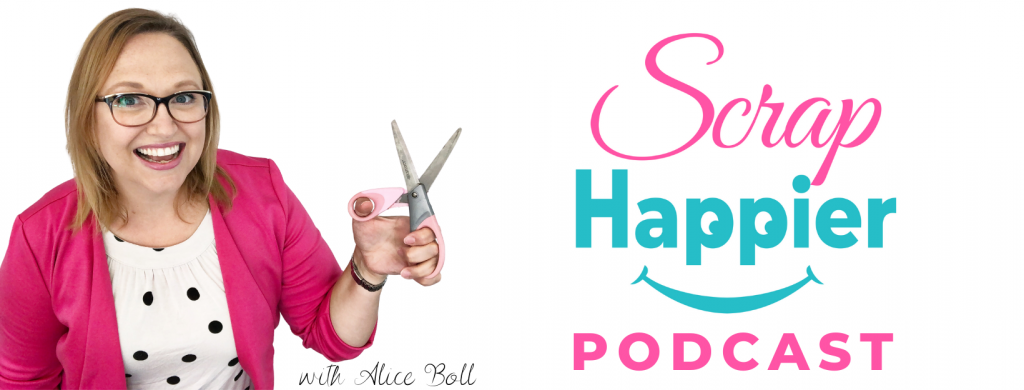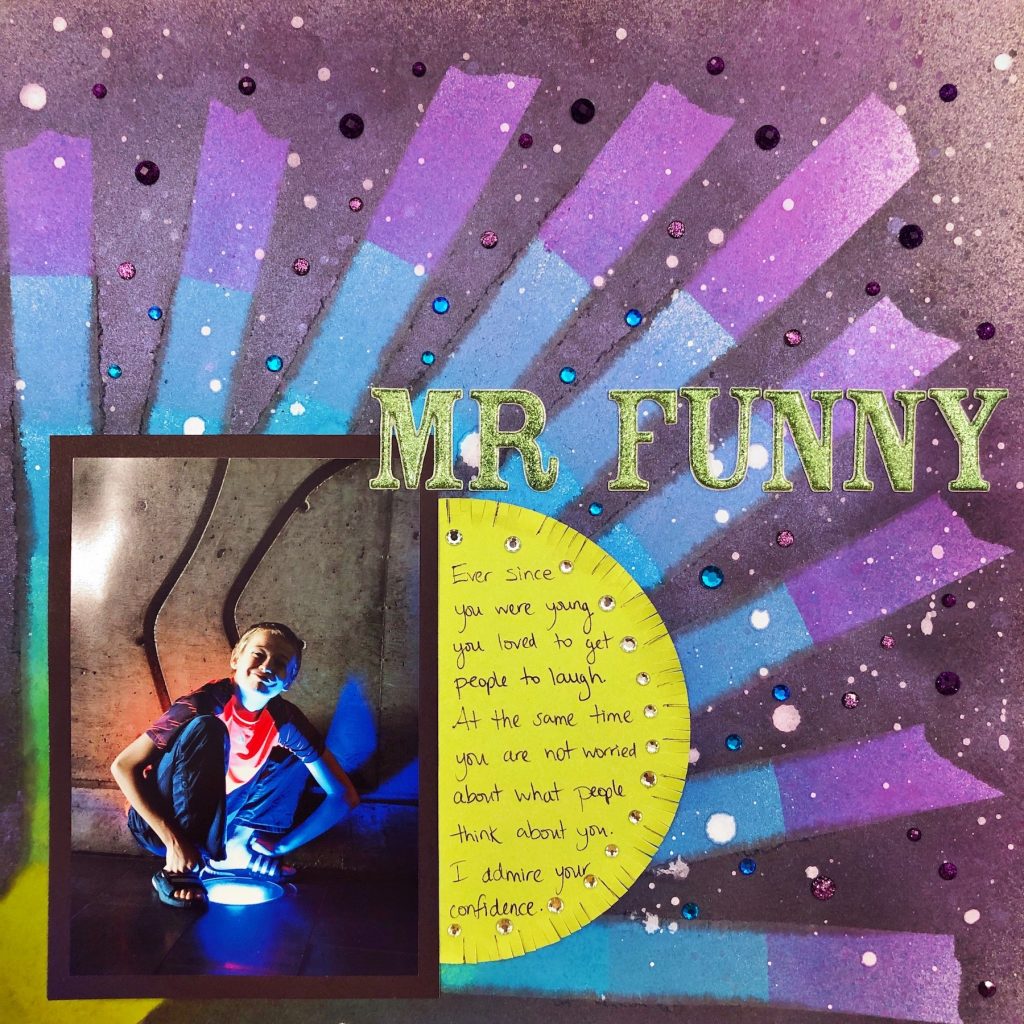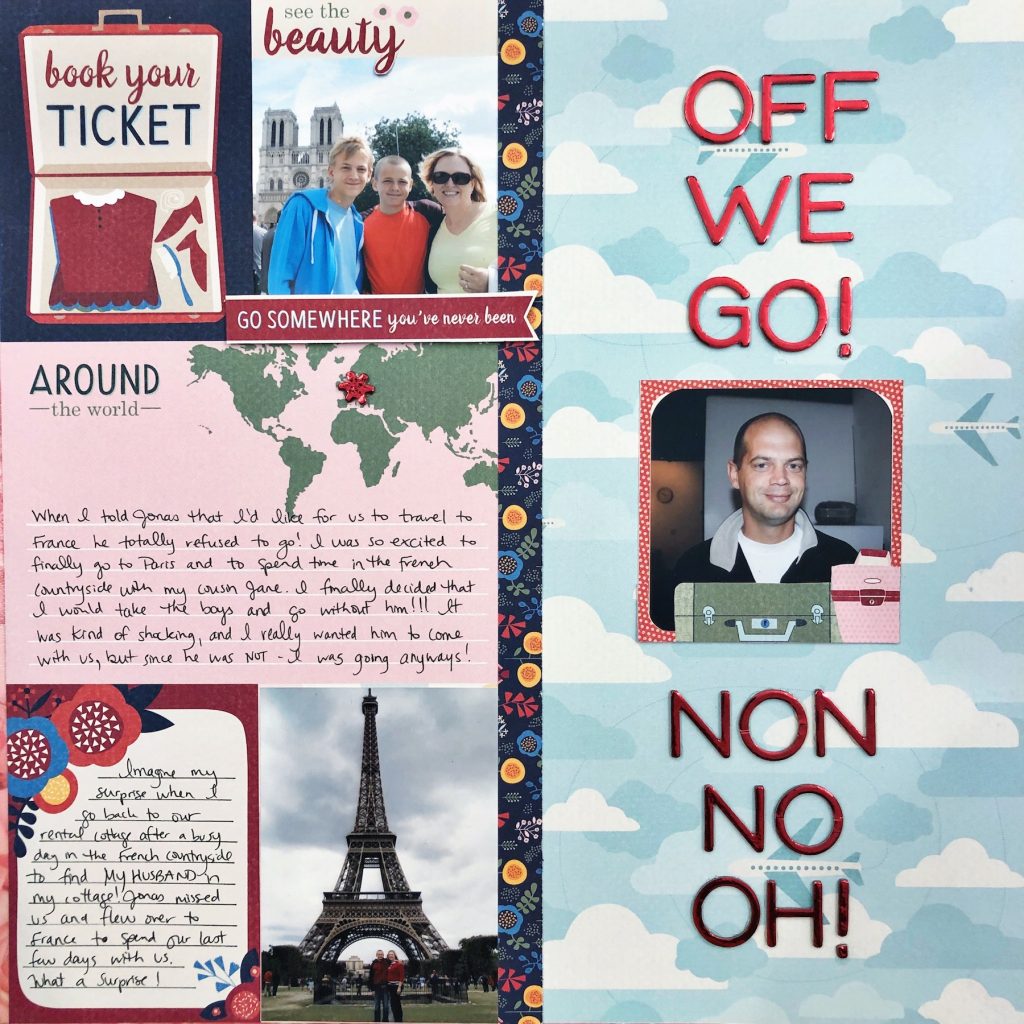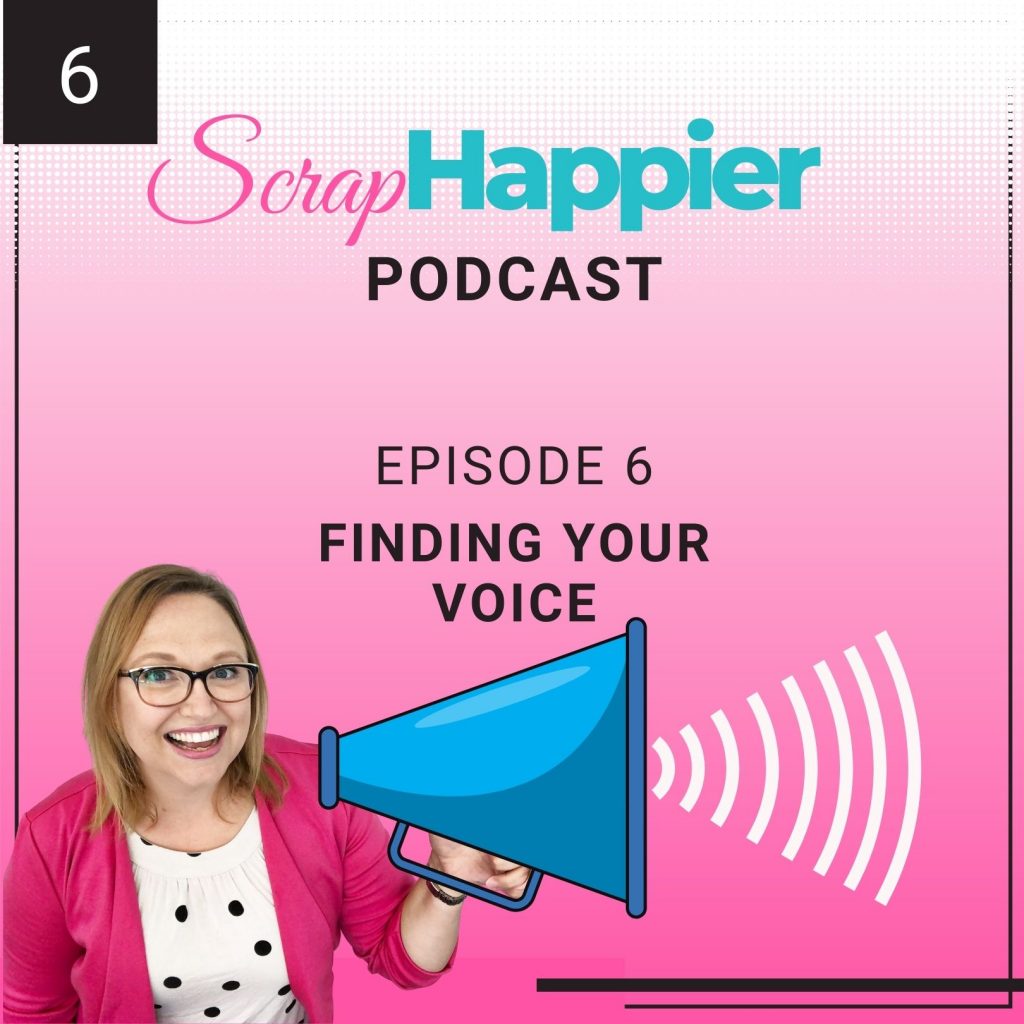
Shownotes
#6. Finding Your Voice
Do you struggle to tell stories that really sound like you? In this episode Alice shares tips and ideas that will help put you on the path to success!
We’ll even go back to high school and talk about point of view, and why you DON’T need to listen to your high school English teacher when you’re scrapbooking.
Sign up for email to join in the next Scrapbook Live event: https://scraphappy.org/subscribe
#scraphappierpodcast @aliceboll
Prompt:
Prompt: Create a page about a time you were a little rebellious and said, “I’m going to do it anyways.”
Tip:
Tip: Record your voice as you tell someone and listen to the words and phrased you use to tell your story.
Layouts Shared:


Connect:
I’d love to hear your thoughts on this episode!
Did you create a layout inspired by this episode? If you share it on social media please tag #scraphappierpodcast
Sharing this episode? Use the #scraphappierpodcast on social media.
Instagram: @aliceboll
Facebook: ScrapHappy
YouTube: ScrapHappy

Episode Transcript
I want to talk to you about finding your voice as a storyteller. And before we dive into the stuff that actually helps you tell better stories, I think it’s really good to talk about the technical things first. So let’s quickly talk about point of view and the options that we have in telling our stories. And then I’ll tell you why I chose the one that I did and what I recommend. So, point of view, it’s going back to high school days and I don’t really want to relive this kind of pain, but let’s go there. So we have first person, and that’s when you’re saying I, we, I did this, we did this.
Your next choice is second person. You did this, you did this. And third person, he did this, she did this, they did this. When we were in high school, we were forced to write in that third person point of view. We had to kind of pretend that we were a journalist and tell something that wasn’t from our own perspective. We were trying to create an impartial point of view. But for me, that just doesn’t work for my scrapbooking. I want to tell my stories, and sometimes I want to speak directly to a person. Usually that person is one of my children, or perhaps my grandmother who’s passed away. Here’s a quick example of a page where I spoke right to my son Ryan on a layout called Mr. Funny.
Ever since you were young, you loved to get people to laugh. At the same time, you’re not worried about what people think about you. I admire your confidence.
And you’ll hear in that example, how I switch from that second person point of view, where I’m talking right to Ryan assuming that he’s the reader of that page. And yet, I still sneak in a little bit of first person point of view. So I’m going to leave you to guess which is my most comfortable point of view when I was creating my pages? Of course, it’s the first person because I’m telling stories from my point of view. And yes, this is what I’m going to suggest for you too. So just pause for a moment and think, whose story are you telling? How do you envision yourself as a storyteller? Are the layouts you’re creating now very simple with only the details? Are you actually behaving more like a journalist or a reporter than a storyteller on your pages? Do you wish that your pages told funnier, more engaging, or emotional kinds of stories?
At this point, I’m kind of hoping you said yes to that because that’s what we’re going to talk about some more. So I want you to think for a second about who the audience is, who are you telling this story to and how would you speak to that person in real life? Now, does your current writing reflect this style? Or in an effort to fit the journaling onto your pages, do you condense your story and lose a lot of your personality and emotion? Sometimes in our quest to create beautiful pages, we don’t give ourselves enough room for our stories. I think it needs to be a consideration that we put more planning in on the front end of our layout creation. We need to give ourselves enough room to tell an expressive or fun or emotional story. So here’s my wish to all page designers that we see in the world, all the ones with those gorgeous, beautiful pages. Put more places for journaling on them please.
But then again, a good page doesn’t have to have a lot of words for it to tell a good story. So let’s cure one example before we talk some more about finding your voice. This layout is called Off We Go. No, No, Oh.
When I told Jonas that I’d like for us to travel to France, he totally refused to go. I was so excited to finally go to Paris and to spend time in the French countryside with my cousin Jane. I finally decided that I would take the boys and I would go without him. It was kind of shocking, and I really wanted him to come with us. But since he was not, I was going anyways. Imagine my surprise when I go back to our rental cottage after a busy day in the French countryside to find my husband in my cottage. Jonas missed us and flew over to France to spend our last few days with us. What a surprise.
I think when we get the person that’s reading our journaling to hear our voice in their head, that’s when we really win with our journaling. We want to bring them along for the ride. We want them to be on this adventure with us. Now, if you’re nodding your head saying, “Yeah, yeah, I want to do that. But how?” Then this is my best tip. Record your voice.
I know, I know. It’s kind of painful, but it really works. Tell an actual person, whether it’s your friend, your family, your loved one, even your dog. If that’s all you have, tell your dog. Even if you want to socially distance yourself and tell somebody over a Zoom chat, doesn’t matter, show them your pictures and listen to how you tell the story. The words that you use, the phrases, the colloquialisms, those things that aren’t formal, they’re not literary. They’re familiar words that you actually use when you’re talking. The slang words or the things that only the people around you actually say, all of those things will come out when you’re telling somebody about your photos and about your story. And even if you don’t record it, just the simple act of telling somebody about it will help you kind of refine your story.
Kind of gives you a little practice, a little warmup session so that you have a better idea of the important points of the story that aren’t actually represented in those photos. Another great tip is to jot down the facts and then describe the action, the setting, the dialogue. What did you hear? What did you feel? What was your physical emotion? You can hear it in my voice, through my words on that layout, that I was pretty choked that my husband wasn’t going to come to France with me. And that’s perfect because that’s the story I wanted to tell. That’s the story that I wanted that page to convey. And I wanted you to be able to hear it in my voice. And if my high school English teacher got a hold of this page and he was grading it for grammar, he wouldn’t be that impressed.
He totally refused to go. I was so excited to finally go to Paris. I finally decided. Yeah, I would not get great marks for this page. But when you hear it, that is my voice. That is how I talk. Even when I say, “I was going anyways”, no English teacher is going to like that, but that’s okay. I’m not writing this for them. And that’s the key when it comes to finding your voice. Determine whose story are you telling and how do you envision yourself as a storyteller? Who are you telling that story to? And make sure it includes a little bit of you in it.
For our tip of the day, record your voice, tell an actual person either over the phone or a video chat or in person, or even if it’s your cat or your dog, and listen to how you tell the story, the words and phrases that you use. Your prompt for today is to create a page about a time you were feeling a little rebellious where you said, “I’m just going to do it anyways.”
